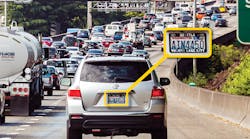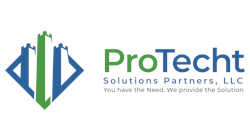This article originally appeared in the February 2023 issue of Security Business magazine. When sharing, don’t forget to mention Security Business magazine on LinkedIn and @SecBusinessMag on Twitter.
Drive into most neighborhoods with a Homeowners Association (HOA) and you are likely to see a few signs welcoming you, a strict speed limit sign, and maybe a pool or other amenities. You may be surprised to be welcomed by cameras on poles as well – not just any cameras, but License Plate Capture cameras that use motion detection to capture the image of a vehicle and the license plate of that vehicle. Generally, one is placed on each ingress and egress lane of travel, but this may not always be the case.
License Plate Capture (LPC) technology, different than Automated License Plate Recognition (ALPR), has been around since about 2015. A good reference for the differences can be found in my article from August 2021 (www.securityinfowatch.com/21230740).
The trend for HOAs to use LPC cameras started in 2019, before the pandemic when Flock Safety released the first affordable cloud-based LPC solution at a value price of approximately $2,500.00 per year per camera, with a cellular data plan included in the price. Later iterations of the Flock camera came with a solar pole and direct installation provided by Flock.
Today, companies like Genetec, Elsag, Vigilant, Rekor, Hanwha, Avigilon, Axis, and more have all jumped into the LPC market, hoping to profit or even replace Flock Safety.
The technology is simple enough. Install an IP camera with at least two-megapixels (1080P) of resolution, running a LPC analytic and a SIM card for cellular communication, and mount it on a pole with a small solar panel array. The camera is set for motion capture only, not continuous recording.
The camera technology is not super complicated, but does require a LPC analytic with accuracy – the higher the accuracy the better.
Why LPC Cameras?
Why residential neighborhoods need LPC cameras has always been the question. Here are three good reasons:
1. To curtail crime. HOA boards believe LPC cameras will help curtail any criminal activity in the neighborhood by allowing the board members to track vehicle license plates. LPC cameras capture both a picture of the vehicle and the tag, so it is feasible that a vehicle reported stolen or a “porch pirate” would be caught on camera as they drove away, providing police with a valid timeline. Overt cameras and signage are typically good deterrents to a bad actor as well.
2. To create Public Private Partnerships (P3). HOAs are always interested in partnering with their local law enforcement in hopes of getting extra attention by way of zone check and occasional officer driving through the neighborhood. Installing LPC cameras is one way of getting the police department’s attention.
3. For peace of mind. Cameras tend to bring people peace of mind. The fact that if something happens, will likely be caught on camera is reassuring, and the offender will be prosecuted and go to jail.
Avoiding Technology Challenges
If LPC cameras are great for neighborhoods, what are the drawbacks? Neighborhoods specifically should exercise some restraint before implementing LPC technology. The pitfalls that many unsuspecting HOAs fall into is that they do not plan appropriately for LPC. They get caught up in the trend, not seeing the forest through the trees. Here are three ways to help them avoid these pitfalls:
1. Create a solid policy. Technology is only as good as the policy it is built on and the people who use it. Technology can be innovative and “cool,” but without the right policy and usage it is a waste of money. Where HOAs miss the mark and get themselves in trouble is that they fail to create a solid policy prior to purchase. This policy should include how privacy concerns such as Personal Identifiable Information (PII) should be addressed to prevent any legal action against the HOA. The policy should include when and how to share LPC video with law enforcement, victims, the association as whole, as well as any legal summons. A good policy will also include new signage to be installed at the entrance of the neighborhood or by the cameras themselves to alert the area is under surveillance.
2. Accept that there will be errors. The security industry needs to be honest for a moment. Analytics are not 100% accurate. They are only as good as the data they were trained from. With Artificial Intelligence (AI) and deep learning they can get better, but they will never be 100%. License Plate Capture analytics, using color IP cameras with a two-megapixel imager, are affected greatly by dynamic scenes. LPC cameras will be more accurate in the daylight (without shadows or rain) and at low speeds (sub 40 mph). In near perfect conditions, the accuracy of these systems may still only be 90%. At night, in the rain, at higher speeds, etc. the accuracy drops significantly.
3. Maximize positioning and lighting. LPC cameras require good position and lighting. This may require cameras to be installed in areas of right-of-way or other HOA-owned or public space property to gain the right field of view of a vehicle and tag. Additionally, LPC cameras require significant amount of lighting since they are traditionally an IP camera running an analytic. This may require additional lighting to be installed for better accuracy at night.
Be the Trusted Advisor
HOA Boards are typically comprised of homeowners who want to make a difference. They may not have security knowledge to make properly informed decisions. Security system integrators and manufacturers who sell and install direct have a responsibility to work with the HOA board to ensure that any camera installation – whether LPC or traditional security cameras – is not only a quality installation and abides by all local legal jurisdiction requirements, but that it is properly used.
Offer guidance to HOA boards regarding the installation and use of the system. The trusted advisor should provide initial education on the system as well as training during the commissioning of the system. Addressing concerns over policy, privacy, costs, and error rate can benefit the HOA board as well as the integrator.
Jon Polly is the Chief Solutions Officer for ProTecht Solutions Partners www.protechtsolutionspartners.com, a security consulting company focused on smart city surveillance. Connect with him on linkedin: www.linkedin.com/in/jonpolly.





